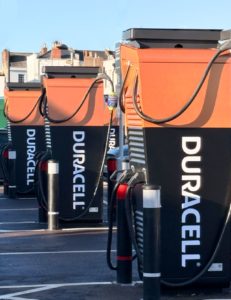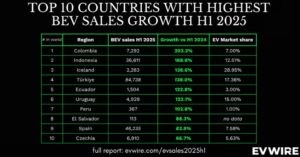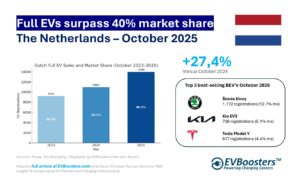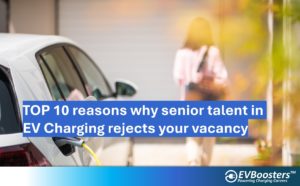Food Retail Chains Lead the Way
Food retail chains dominate EV charger deployment, leveraging large parking areas and high foot traffic. Brands like Lidl and Carrefour have made EV infrastructure integral to their operations. Lidl has installed over 4,500 chargers, growing its installation rate from one every two days in 2022 to three daily in 2023, offering competitive pricing at €0.29/kWh for AC and €0.39/kWh for DC charging. Similarly, Carrefour offers free charging for the first hour, aligning with sustainability goals. This focus on EV charging ensures food retail’s sustained dominance since 2017.
Hotels Capitalise on Overnight Charging
Hotels are integrating EV chargers to attract guests, particularly by offering slow chargers suitable for overnight use. Chains like B&B Hotels and ibis have made EV infrastructure part of their guest services. While hotels initially lagged behind, they have gained significant ground, often at the expense of car dealerships. This trend highlights the sector’s growing importance as a convenient charging hub.
Decline in Car Dealerships’ Role
Car dealerships, once pioneers in EV charging to support new vehicle sales, are seeing a decline in their market share. As alternative locations like hotels and parking operators expand, dealerships’ dependency for public charging is diminishing. This reflects the diversification and increasing accessibility of charging options across sectors.

Parking Operators’ Rapid Growth
Parking operators have significantly increased their share of EV charging points. Operators such as Indigo and Effia are building extensive networks, benefiting from their ability to accommodate long-term parking. This aligns with EV drivers’ needs for extended charging durations. Parking operators’ investments ensure compliance with LOM and solidify their role as key ecosystem players.
Expansion in Non-Food Retail and Fast-Food
Non-food retail and fast-food sectors are witnessing rapid growth. Ikea has incorporated chargers into its sustainability initiatives, while McDonald’s Izivia Fast network added over 2,000 chargers across 700 locations in 2024, marking a 400% increase. These sectors are tapping into the growing demand for convenient and accessible charging solutions, carving out a unique niche in the market.
Emerging Roles for Restaurants and Speciality Locations
Smaller segments, including restaurants, fitness centres, and car washes, are steadily growing their EV charger deployment. Chains like Campanile are incorporating EV chargers to enhance convenience for their customers. Though smaller in scale, these contributions diversify the ecosystem, ensuring varied options for EV drivers.
Automotive and Dealer locations highest utilisation rates
The distribution of EV chargers across segments has evolved significantly. Food retail continues to dominate, while parking operators show remarkable growth. Hotels, non-food retail, and fast-food chains are steadily increasing their presence. Interestingly, automotive-related locations such as car rentals and dealerships report the highest utilisation rates, likely due to the longer charging times of AC chargers. In contrast, retail and commercial locations maintain steady usage rates of 5-6%, reflecting balanced supply and demand.
Impact Mobility Orientation Law (LOM)
The LOM law is a driving force behind these developments, pushing sectors to invest in EV infrastructure. While progress is evident, challenges remain for smaller businesses with limited resources, raising concerns about meeting the January 2025 compliance deadline. The law has spurred proactive efforts from food retail, parking operators, and hotels, ensuring compliance while leveraging opportunities to attract EV drivers.
Conclusion
France’s public charging ecosystem is diversifying and growing steadily, driven by regulatory mandates and evolving consumer preferences. Food retail remains the cornerstone, while hotels, parking operators, and fast-food chains contribute to the expansion. The balanced growth across segments indicates a collaborative effort to meet regulatory goals and address user needs. With the LOM law now in effect, France is set to solidify its position as a leader in EV adoption, paving the way for sustainable mobility.
Source: this article was created using the knowledge and data provided by Gireve and EAFO.







